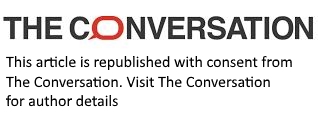We spent a month writing and reading in glass boxes. We read faster, wrote more – and inspired passersby
- Written by Fergus Edwards, Lecturer in English, University of Tasmania

Lucy Christopher, a new mother, had been trying to return to her work-in-progress for several months, but could find neither time, headspace, nor validation that writing was worth the time away from her child.
Why should she spend time writing when it would likely bring few financial rewards? Anyway, could she still write? Perhaps having a baby had permanently lessened her ability to think creatively for sustained periods?
She had the idea of using public installation as a method to investigate and inspire her creative process. Perhaps writing in a public glass box, something a little like performance art, could be a way to reclaim the role of writer?
Throughout the month of June, we were among 11 writers and 30 readers who spent time sitting in glass boxes in a public square in Hobart for the WritersBLOCK / ReadersBLOCK project. The project was part of the Hobart City Council’s InsideOUT initiative, in which boxes containing visual art are displayed around the city.
People were able to watch local writers working in real time, and readers consuming books by Tasmanian authors. Writers and readers became creative artefacts, allowing observers to witness the humans at the centre of the struggling literary industry.
Over 30 books were read and more than 30,000 words were written. Members of the public stopped to look at the blocks roughly every minute. About a third of them stopped for longer, to take photographs or read the artist’s statement.
The participants were given space to notice what has been blocking their ability to write or read. Everyone involved was invited to consider why we value reading and writing in name but not in action, and to consider what is needed to preserve these increasingly uncommon activities in Australia.
Blocked authors
The average Australian author earns just A$18,200 per year from their writing – more than $7,500 below the poverty line.
“Writers typically spend only around half their working time producing original work,” according to the 2022 National Survey of Australian Book Authors. Even while writing, only “6% of authors reported no competing demands for their writing time”.
It takes time to write a book. If a typical writer produces 300 words an hour, then it’s 267 hours to produce a first draft of an 80,000-word novel. And that’s just the mathematics; the creation of a novel almost inevitably comes with self-doubt, insecurity, and often outright panic.
Writers who participated in the project frequently cited family demands as a major block to writing. Ben Walter, author of What Fear Was, mentioned “family commitments […] alongside other work and commitments, makes it hard to devote oneself to the difficult art of writing, particularly when there’s little prospect of reward”.
Liz Evans, author of Catherine Wheel, agreed: “as a writer I work from home and earn far less money than my partner, so family and household duties tend to fall on my shoulders, and this represents the biggest block to my work.”
Struggling readers
Readers are also struggling. Australians can read, but they are choosing not to.
According to the most recent OECD Survey of Adult Skills, Australia’s literacy rates are better than those in the UK and US, even though “relatively large proportions of the adult population in Australia have poor literacy”. And yet reading rates in Australia are declining.
More than 25% of Australians had not read or listened to a book in the previous year, according to the National Reading Survey conducted by Australia Reads in 2021, which also found that “reading rates in Australia lag behind international standards”.
Only 64% of Australians purchased a book in 2023, fewer than almost all countries surveyed by the European and International Book Federation.
Time, care and labour
The idea behind WritersBLOCK / ReadersBLOCK was to investigate the public’s effect on the creative process. The boxes were a way of representing the simultaneous isolation and exposure of the act of writing. There are echoes of musician PJ Harvey, who recorded an album in a glass box in 2015 to show aesthetic production in action.
As one participant, Cameron Hindrum, author of Blue Cathedral, observed: “The cube was a little set, with props, and I had an audience. I got to play the role of The Writer.”
Participating readers also found their time in ReadersBLOCK beneficial. One commented that ReadersBLOCK “created a validation of the activity and the discovery of a book I had longed to read but never found the time.” Another noted that, “after 2 years of not reading or writing, I opened a book in the block and read, [then] I went to the bookshop, bought that book and have almost finished it.”
So why should the glass block prove to be such a productive space? Christopher suspects it is related to the accountability writing in such a public place demands. With people watching her, she can’t sit and do nothing. No doom-scrolling: she must at least pretend to write.
But the public also offers validation. Each time someone stops to take a photo, read the artist’s statement, or just watch the writer at work, they are connecting with the process and considering what it takes to write.
For participating readers, the biggest difference was not the quantity but the intensity of the reading. Without office chatter or email alerts, it was easier to become immersed in a book.
But there was another aspect. Having a writer visible in the next block was a reminder that a book is not just another product to be consumed: it is something a particular person wrote, something that has taken time and effort to produce.
Humanising reading and writing in this way might remind us of the importance of stories and the benefits of making time to slow down and enjoy them.
Authors: Fergus Edwards, Lecturer in English, University of Tasmania





